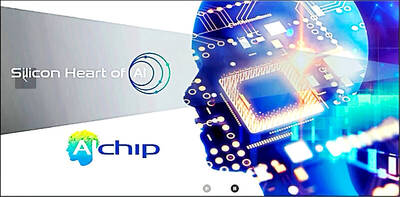Sharp Corp, Japan's largest maker of liquid-crystal-display televisions, will acquire a 14 percent stake in Pioneer Corp for ?41.4 billion (US$358 million) to develop DVD players and car navigation equipment.
Pioneer, Japan's largest car navigation systems maker, will sell 30 million new shares, making Osaka-based Sharp its biggest shareholder, the companies said in a statement today. Sharp will sell 10 million shares, or a 0.9 percent holding, to Tokyo-based Pioneer to cement the alliance.
Investing in Pioneer will help Sharp cut costs in high-definition DVD players and enter the car navigation market.
"Due to advanced digitization of electronic devices and products, the market circumstances for electronic companies continue to become severe," requiring increased investment, Sharp said. "The management sees an opportunity in the strategic business alliance to enhance an efficient differentiation of business and to preserve corporate profits."
Pioneer is trying to reverse a profit slump after being saddled with overcapacity in plasma display panels even as prices keep declining.
"The alliance will enable the companies to reduce costs and shorten development times," said Naoki Fujiwara, who helps oversee US$3.24 billion at Shinkin Asset Management Co in Tokyo. "It's increasingly important for consumer-electronics makers to speedily develop products and recover their investments as the era where everybody was profitable has gone."
Sharp is known for its Aquos brand of LCD TVs, and was the world's third biggest LCD TV maker in terms of revenue last year.

To many, Tatu City on the outskirts of Nairobi looks like a success. The first city entirely built by a private company to be operational in east Africa, with about 25,000 people living and working there, it accounts for about two-thirds of all foreign investment in Kenya. Its low-tax status has attracted more than 100 businesses including Heineken, coffee brand Dormans, and the biggest call-center and cold-chain transport firms in the region. However, to some local politicians, Tatu City has looked more like a target for extortion. A parade of governors have demanded land worth millions of dollars in exchange

An Indonesian animated movie is smashing regional box office records and could be set for wider success as it prepares to open beyond the Southeast Asian archipelago’s silver screens. Jumbo — a film based on the adventures of main character, Don, a large orphaned Indonesian boy facing bullying at school — last month became the highest-grossing Southeast Asian animated film, raking in more than US$8 million. Released at the end of March to coincide with the Eid holidays after the Islamic fasting month of Ramadan, the movie has hit 8 million ticket sales, the third-highest in Indonesian cinema history, Film

Taiwan Semiconductor Manufacturing Co’s (TSMC, 台積電) revenue jumped 48 percent last month, underscoring how electronics firms scrambled to acquire essential components before global tariffs took effect. The main chipmaker for Apple Inc and Nvidia Corp reported monthly sales of NT$349.6 billion (US$11.6 billion). That compares with the average analysts’ estimate for a 38 percent rise in second-quarter revenue. US President Donald Trump’s trade war is prompting economists to retool GDP forecasts worldwide, casting doubt over the outlook for everything from iPhone demand to computing and datacenter construction. However, TSMC — a barometer for global tech spending given its central role in the

Alchip Technologies Ltd (世芯), an application-specific integrated circuit (ASIC) designer specializing in server chips, expects revenue to decline this year due to sagging demand for 5-nanometer artificial intelligence (AI) chips from a North America-based major customer, a company executive said yesterday. That would be the first contraction in revenue for Alchip as it has been enjoying strong revenue growth over the past few years, benefiting from cloud-service providers’ moves to reduce dependence on Nvidia Corp’s expensive AI chips by building their own AI accelerator by outsourcing chip design. The 5-nanometer chip was supposed to be a new growth engine as the lifecycle